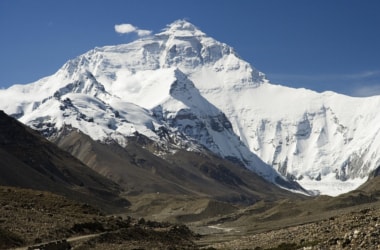Himalayan region gets its own high altitude research station HIMANSH
Q. Which region is called the Water Tower of Asia?- Published on 12 Oct 16a. Himalayan region
b. Southern Plains
c. Deccan Plateau
d. Western Ghats
ANSWER: Himalayan region

Himalayan region has the largest concentration of glaciers outside the polar caps as the region is known as the Water Tower of Asia
- It is the source of 10 major river systems providing irrigation, power and drinking water for over 700 million people living in India, Pakistan and Bangladesh
- This is nearly 10 percent of the world population
- Understanding the behaviour of the glaciers and their contribution to the sustainable supply of water for mankind and agriculture is one of the grand challenges of the Indians scientific community
- As part of the government’s initiative to better study and quantify the Himalayan glacier responses towards climate change, the National Centre for Antarctic and Ocean Research, Goa under the Ministry of Earth Sciences has established a high altitude research station in Himalaya called HIMANSH
- This means slice of ice
- The station is located above 13,500 feet at 4000m in the remote region in Spiti, Himachal Pradesh
- The station houses many instruments to quantify the melting glacier and its relation to climate change
- Some of the nutriments available at the research facility include Automatic Weather Stations for weather monitoring, water level recorder for quantifying the glacier melt, ground penetrating radar to know the thickness of glaciers, geodetic GPS system to study glacier movements, snow fork for studying snow thickness, steam rill, snow corer, temperature profiler and numerous glaciological tools
- Researchers would also use this as base for undertaking surveys using Terrestrial Research Scanners and Unmanned Aerial Vehicles that digitise the glacier motion and snow cover variations with exceptional precision
- Ongoing initiative by NCAOR will contribute to the integrated study of the glaciers in the upper Indus or Chandra basin in HP and contribute to their discharge
- As per the UN data, the contribution of snow/glacier melt in annual stream runoff is higher in the Indus basin as compared to Ganga and Brahmaputra basins
- Therefore, understanding the glacier mass balance and their contribution to the Indus River is more critical than other basins towards the understanding on the impact of glacier retreat on the water cycle in N. India and Pakistan
- Some of the benchmark glaciers being studied include Bada Shigri, Samudra Tapu, Sutri Dhaka, Batal, Gepang Gath and Kunzam.
- An integrated study using glaciological, geodetic, galcjio-hydrological methods will shed light on the glacier response to the changing climate in the region
- This will quantify the contribution from glacial melt water to the river discharge in the Indus basin
- Himansh will also provide support to the scientific research on Himalayan glaciers and its hydrological contribution